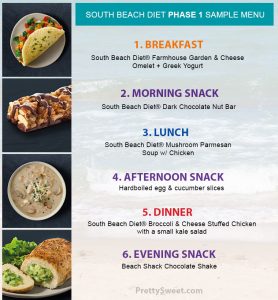Health and Fitness Update #7
This week I researched a variety of different types of diets. The South Beach diet, the vegan diet, the weight watchers diet and the Mediterranean diet are all different types of diets I have never tried but always wanted to give a shot. Good nutrition is an important part of leading a healthy lifestyle. Combined with physical activity, your diet can help you to reach and maintain a healthy weight, reduce your risk of chronic diseases. There are several benefits of eating healthy, which include weight loss, reduced cancer risk, diabetes management, heart health, strong teeth and bones and improved memory. Below is a description of each diet, and a few images of the types of foods that consist within these diets.
The South Beach Diet:
Link: https://health.usnews.com/best-diet/south-beach-diet
On the South Beach Diet, there are good carbs and fats, and there are unhealthy carbs and fats. The key to weight loss is choosing the best of each. That means lots of no starchy vegetables, fish, eggs, full-fat dairy, protein like chicken and turkey, whole grains and nuts. South Beach is lower in carbohydrates and higher in protein and healthy fats than the typical American diet. South Beach doesn’t categorically eliminate all carbs.
How Does It Work? There are two phases within the South beach diet. Phase one is the weight-loss phase. You will stay in this phase until you reach your desired weight-loss goal or you want more flexibility in your food choices. In phase one, you will limit daily net carbs to 50 grams. You’ll include high-quality protein (such as fish, shellfish, chicken, turkey, lean beef and soy) and no starchy vegetables. You may include very small quantities of beans and legumes, and extremely small amounts of high-fiber fruits like berries and high-protein whole grains like quinoa. Phase two, the maintenance phase, is your lifelong healthy way to eat. You’ll begin to reintroduce more “good carbs,” such as whole grains, low-sugar fruits and starchy vegetables. You’ll also begin to increase your daily net carbs with a goal between 75 and 100 grams per day. You’ll keep up a high protein intake, representing at least 25% of your daily calories, to maintain muscle mass. Although no food is off-limits, some individuals – such as people who are insulin-resistant or postmenopausal women – may have more success by continuing to limit their carbs.



The Vegan Diet:
Link: https://www.healthline.com/nutrition/vegan-diet-guide
A vegan diet contains only plants (such as vegetables, grains, nuts and fruits) and foods made from plants. Vegans do not eat foods that come from animals, including dairy products and eggs.The vegan diet has become very popular. Increasingly more people have decided to go vegan for ethical, environmental or health reasons. When done right, such a diet may result in various health benefits, including a trimmer waistline and improved blood sugar control. Nevertheless, a diet based exclusively on plant foods may, in some cases, increase the risk of nutrient deficiencies. Veganism is defined as a way of living that attempts to exclude all forms of animal exploitation and cruelty, whether for food, clothing or any other purpose. For these reasons, the vegan diet is devoid of all animal products, including meat, eggs and dairy. People choose to follow a vegan diet for various reasons. These usually range from ethics to environmental concerns, but they can also stem from a desire to improve health. There are different varieties of vegan diets. The most common include:
- Whole-food vegan diet: A diet based on a wide variety of whole plant foods such as fruits, vegetables, whole grains, legumes, nuts and seeds.
- Raw-food vegan diet: A vegan diet based on raw fruits, vegetables, nuts, seeds or plant foods cooked at temperatures below 118°F (48°C) (1Trusted Source).
- 80/10/10: The 80/10/10 diet is a raw-food vegan diet that limits fat-rich plants such as nuts and avocados and relies mainly on raw fruits and soft greens instead. Also referred to as the low-fat, raw-food vegan diet or fruitarian diet.
- The starch solution: A low-fat, high-carb vegan diet similar to the 80/10/10 but that focuses on cooked starches like potatoes, rice and corn instead of fruit.
- Raw till 4: A low-fat vegan diet inspired by the 80/10/10 and starch solution. Raw foods are consumed until 4 p.m., with the option of a cooked plant-based meal for dinner.
- The thrive diet: The thrive diet is a raw-food vegan diet. Followers eat plant-based, whole foods that are raw or minimally cooked at low temperatures.
- Junk-food vegan diet: A vegan diet lacking in whole plant foods that relies heavily on mock meats and cheeses, fries, vegan desserts and other heavily processed vegan foods.
Although several variations of the vegan diet exist, most scientific research rarely differentiates between different types of vegan diets.

